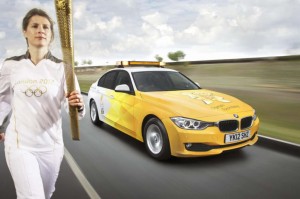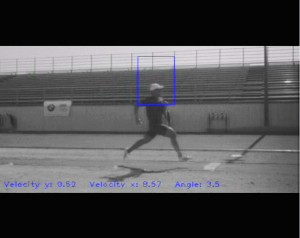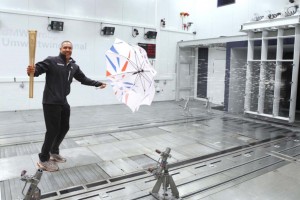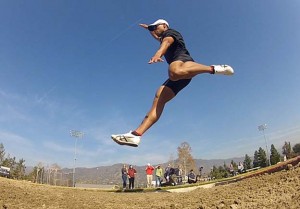
BMW will be a major participant in the London Summer Olympics, providing vehicles, training athletes, even testing the durability of the Olympic torch.
Neither rain, nor sleet, nor snow, nor hail shall keep the folks carrying the Olympic torch from their appointed rounds in the build-up to the London games, this summer. And to make sure there are no embarrassing flame-outs along the way event organizers turned to BMW which put the torch to the sort of extreme testing that would even test the mettle of an automobile.
As the 2012 London Olympics’ main automotive sponsor, BMW is taking an extremely high profile, providing a fleet of 4,000 vehicles to ferry athletes, officials and VIPs around the British capital, helping athletes train in high-tech fashion – and making sure the Olympic flame stays lit.
“London 2012 is a once-in-a-lifetime opportunity for the UK and a moment in history of which BMW wants to be a part,” said Michelle Roberts, who is overseeing the maker’s communications for the games.
BMW will wind up flying a variety of flags during the event. It will be at its most high profile with the German vehicles it will supply for the games, 4,000 of them all told, including a number of Minis, as might be expected, produced by BMW’s English subsidiary.
Significantly, because the London Organising Committee of the Olympic and Paralymic Games, or LOCOG, has set a goal of holding down pollution during the event, it is requiring the average vehicle to produce less than 120 grams of CO2 per kilometer. That means the fleet will features a number of battery cars, diesels and conventional “petrol” models, as the Brits would say. Unfortunately for BMW, the timing won’t allow it to use the new i3 and i8 models coming from its new BMW i division.
“The BMW fleet will become a familiar sight around our venues this summer and will help us perform a huge range of tasks to will help to ensure the smooth running of the Games,” says Paul Deighton, LOCOG’s CEO after BMW’s first 40 vehicles reached London. “Taking delivery of the first vehicles is an exciting moment for us as we continue our preparation for the Olympic and Paralympic Games.”
Those dignitaries lucky enough to get chauffeured through London traffic won’t have to deal with the extremes facing the Olympic torch, or the runners carrying it, in the prelude to the Summer Games. To ensure the flame would stay lit the latest version of the torch went through extensive testing at the BMW Energy and Environmental Test Center, in Munich.

BMW modified a vision system designed to spot pedestrians walking in front of a car to measure such things as speed and take-off angle during a long jump.
The facility has three wind tunnels and two climatic test rooms capable of simulating just about every weather condition possible, from -4F up to 131F and wind speeds up to 174 mph, as well as altitudes up to 14,000 feet. By comparison, the torch and testers had it relatively easy, though they still faced conditions ranging from 23 to 104 degrees, with BMW throwing everything from wind to rain to snow at the torch – which stayed lit the entire time.
But the biggest test of the maker’s capabilities will come during the actual games when 11 members of the U.S. Olympic team chase the gold.
The maker signed on as a sponsor of the U.S. Olympic Committee, the USOC, in July 2010, its six-year deal focusing on several key sports, including both sprints and long-distance running. Decathlete Bryan Clay is one of the U.S. hopefuls who have been benefiting from BMW technology adapted for Olympic training.
The maker has, for example, modified some of its advanced vision technology to give coaches a more accurate look at how a long jumper approaches the take-off point, how they travel through the air and then land.
“Our world is measured in centimeters,” said Clay, noting that even the most subtle improvement in his form could put him atop the podium in London.
Track and field is considered one of the strong points in the USOC Olympic assault. Traditionally, runners and jumpers have counted on the support of shoe and sporting wear manufacturers, such as Nike. So, BMW’s involvement is a major development.
The U.S. team won’t be the only beneficiary of BMW’s largesse, however. It has been expanding its involvement in the Olympics and now sponsors teams from Great Britain, France, Greece, China and, not surprisingly, Germany.
If its high-tech efforts pay off this summer, perhaps the Bavarian maker will have to revise its classic advertising tagline, “The Ultimate Driving Machine” becoming “The Ultimate Performing Athlete.”


